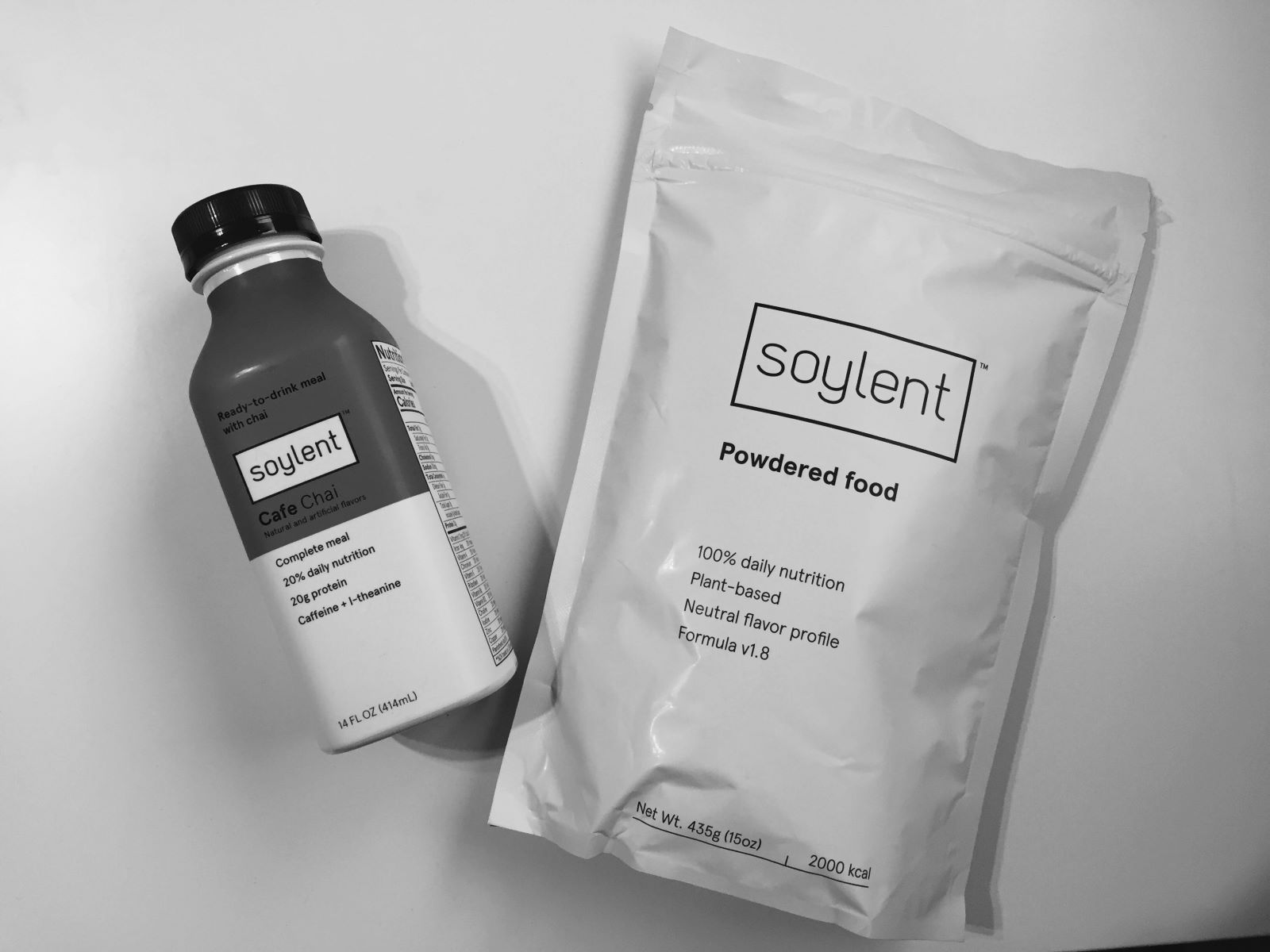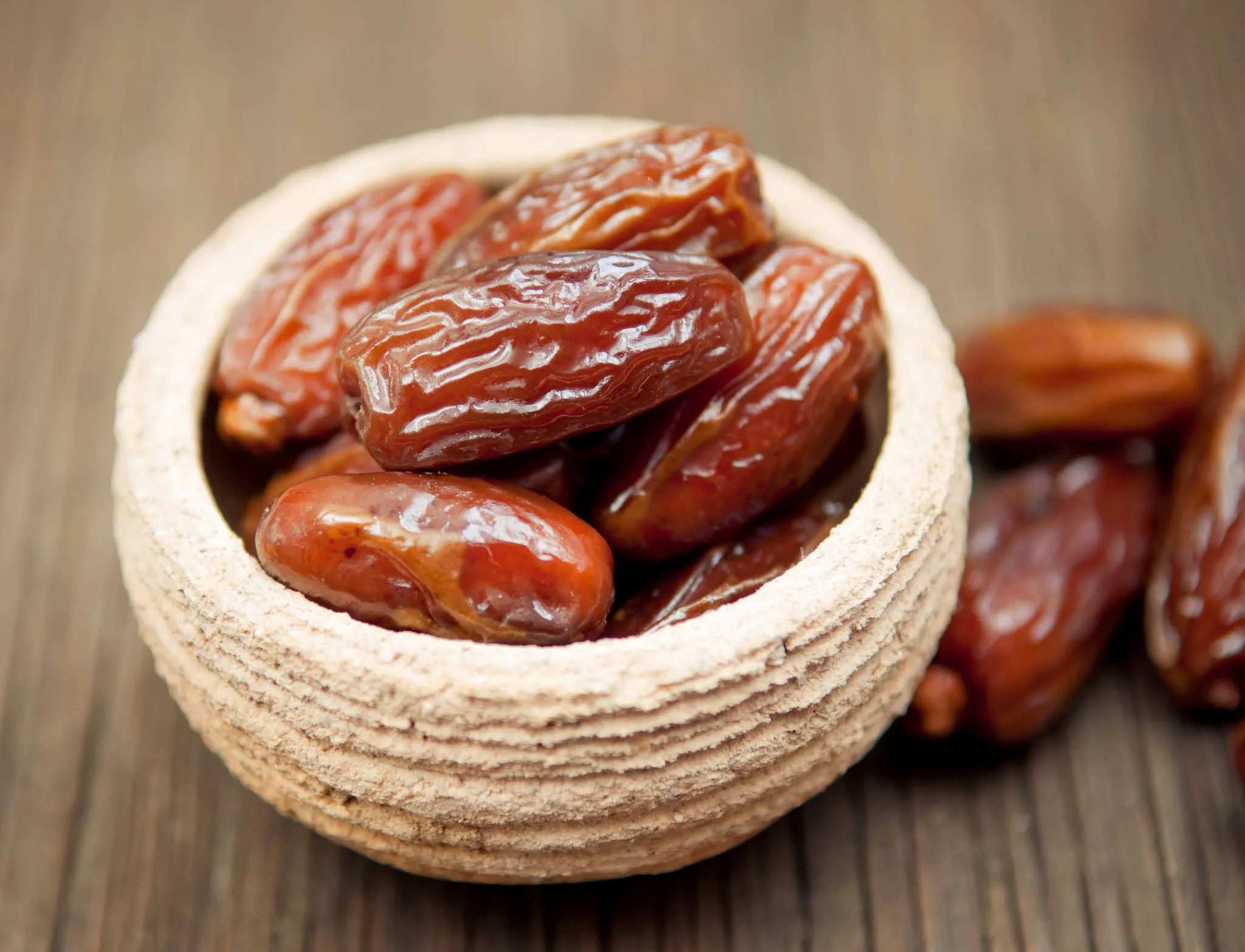Home>Food and Cooking>Thyme Vs. Rosemary: Unveiling The Ultimate Herb Showdown!


Food and Cooking
Thyme Vs. Rosemary: Unveiling The Ultimate Herb Showdown!
Published: January 18, 2024
Discover the best herb for your culinary creations with our Thyme vs. Rosemary showdown. Explore expert tips and recipes for food and cooking enthusiasts!
(Many of the links in this article redirect to a specific reviewed product. Your purchase of these products through affiliate links helps to generate commission for Regretless.com, at no extra cost. Learn more)
Table of Contents
Introduction
Thyme and rosemary are two of the most popular and versatile herbs in the culinary world, each offering its own unique flavor profile and aromatic qualities. As we delve into the world of herbs, we are often faced with the delightful dilemma of choosing between these two culinary powerhouses. Both thyme and rosemary have been cherished for centuries, not only for their culinary contributions but also for their medicinal properties and aromatic allure.
In this comprehensive exploration, we will embark on a flavorful journey to unravel the distinctive characteristics of thyme and rosemary. From their rich historical significance to their diverse culinary applications and medicinal benefits, we will dissect the essence of these herbs to understand their individual appeal. Additionally, we will uncover the secrets behind cultivating and maintaining these herbs, as well as their unique flavor profiles and aromatic compositions.
Join us as we embark on an aromatic adventure through the world of thyme and rosemary, where we will uncover the nuances that set these herbs apart and celebrate their contributions to the culinary and medicinal realms. Let's embark on this herbaceous odyssey to gain a deeper understanding of thyme and rosemary, ultimately empowering ourselves to make informed choices when it comes to enhancing our culinary creations and embracing the therapeutic potential of these remarkable herbs.
History of Thyme and Rosemary
Thyme and rosemary have etched their presence in human history, dating back to ancient civilizations where they were revered for their culinary and medicinal properties.
Thyme, with its delicate leaves and subtle, earthy flavor, has been cherished since antiquity. The ancient Egyptians considered thyme as an emblem of courage and used it in embalming practices. Greeks and Romans associated thyme with elegance and grace, incorporating it into their baths and temples. It was also believed that thyme was a source of strength and energy, enhancing both physical and mental well-being.
Similarly, rosemary has a storied past, with its name derived from the Latin words "ros" (dew) and "marinus" (sea), signifying its natural habitat along the Mediterranean coast. Revered by ancient cultures, rosemary was regarded as a symbol of remembrance, loyalty, and love. It was often used in religious ceremonies, weddings, and funerals, signifying its deep cultural significance.
As time progressed, the culinary prowess of these herbs became increasingly recognized. Both thyme and rosemary were integral components of medieval European cuisine, where they were utilized to enhance the flavor of meats, stews, and bread.
During the Renaissance, these herbs gained further prominence, with renowned herbalists and physicians extolling their medicinal virtues. Culpeper's "Complete Herbal" and other influential texts of the era documented the therapeutic properties of thyme and rosemary, solidifying their status as indispensable botanical remedies.
The rich historical tapestry of thyme and rosemary has transcended centuries, and their enduring appeal continues to shape culinary traditions and herbal medicine practices worldwide. These herbs have stood the test of time, weaving themselves into the fabric of human culture and leaving an indelible mark on the culinary and medicinal landscapes.
Culinary Uses
Thyme and rosemary are revered for their exceptional culinary versatility, imparting depth, aroma, and complexity to a wide array of dishes. These aromatic herbs are celebrated for their ability to elevate the flavor profile of both savory and sweet creations, making them indispensable in the culinary world.
Thyme:
- Savory Delights: Thyme is a staple in French and Mediterranean cuisines, where its subtle, earthy flavor enhances the taste of soups, stews, and braised dishes. It pairs exquisitely with roasted vegetables, imparting a fragrant and savory essence to dishes like roasted carrots, potatoes, and mushrooms.
- Poultry and Meat: This herb is a natural companion to poultry and meat, infusing roasted chicken, grilled lamb, and beef dishes with a delightful aromatic quality. It is often used in marinades and rubs to impart a nuanced herbal flavor.
- Breads and Pastries: In the realm of baking, thyme adds a unique dimension to bread and pastry recipes. Focaccia, savory scones, and herbed flatbreads benefit from the addition of thyme, imparting a delightful savory note to the baked goods.
Rosemary:
- Grilled Delicacies: Rosemary's robust and pine-like flavor makes it an excellent choice for grilled meats, imparting a fragrant and earthy essence to dishes such as grilled lamb chops, kebabs, and pork tenderloin.
- Roasted Vegetables: When roasted with vegetables such as potatoes, carrots, and parsnips, rosemary adds a delightful aromatic quality, enhancing the overall flavor profile of the dish.
- Breads and Infusions: Rosemary's assertive flavor shines in bread recipes, particularly in artisanal loaves and focaccia. Additionally, it can be used to infuse oils and vinegar, adding a distinct herbal essence to dressings and marinades.
Both thyme and rosemary are integral to the classic herb blend, herbes de Provence, which also includes savory, marjoram, and oregano. This aromatic medley is a versatile addition to a myriad of dishes, from roasted meats and vegetables to soups and sauces.
In summary, the culinary applications of thyme and rosemary are as diverse as they are delightful. Their ability to infuse dishes with nuanced flavors and captivating aromas underscores their indispensable role in the culinary realm, making them essential additions to any kitchen. Whether used fresh or dried, these herbs continue to inspire and elevate culinary creations, enriching the sensory experience of those who savor their remarkable contributions.
Medicinal Properties
Thyme and rosemary are not only revered for their culinary prowess but also esteemed for their remarkable medicinal properties, which have been harnessed for centuries to promote health and well-being. These herbs are rich sources of potent compounds that offer a myriad of health benefits, ranging from their antimicrobial and antioxidant properties to their potential therapeutic effects on various ailments.
Thyme:
Thyme is renowned for its potent antimicrobial properties, attributed to the presence of compounds such as thymol and carvacrol. These bioactive constituents exhibit powerful antibacterial and antifungal properties, making thyme a valuable ally in combating microbial infections. Additionally, thyme is recognized for its potential role in supporting respiratory health. It has been traditionally utilized to alleviate coughs, bronchitis, and congestion, with its expectorant properties aiding in the clearance of mucus from the respiratory tract. Furthermore, thyme is esteemed for its antioxidant content, which may contribute to its protective effects against oxidative stress and cellular damage.
Rosemary:
Similarly, rosemary boasts an impressive array of medicinal attributes, with its high concentration of bioactive compounds such as rosmarinic acid and carnosic acid. These compounds exhibit potent antioxidant properties, offering protection against oxidative damage and inflammation. Rosemary has been studied for its potential cognitive benefits, with research suggesting that its components may support cognitive function and memory. Additionally, rosemary has been traditionally employed to aid digestion, with its aromatic qualities believed to stimulate appetite and promote digestive comfort. Furthermore, rosemary's anti-inflammatory properties have piqued the interest of researchers, hinting at its potential role in mitigating inflammatory conditions.
In summary, thyme and rosemary stand as botanical powerhouses, offering a wealth of medicinal properties that have been cherished for generations. Whether infused into herbal teas, incorporated into tinctures, or utilized in aromatherapy, these herbs continue to captivate the interest of health enthusiasts and researchers alike. As we continue to unravel the therapeutic potential of thyme and rosemary, their enduring legacy as medicinal marvels persists, underscoring their significance in the realm of natural health and wellness.
Growing and Maintenance
Thyme and rosemary, with their aromatic allure and culinary significance, are prized additions to any herb garden. Cultivating these herbs not only offers the satisfaction of homegrown flavors but also provides an opportunity to bask in the sensory delights of their fragrant foliage. When it comes to growing and maintaining thyme and rosemary, a few key considerations can ensure a thriving herb garden brimming with these flavorful and aromatic gems.
Thyme:
Thyme thrives in well-drained soil and basks in sunlight, making it an ideal candidate for rock gardens, containers, or sunny garden beds. This resilient herb is relatively low-maintenance, requiring minimal water once established. When cultivating thyme from seeds, it is best to start indoors and transplant the seedlings once they have developed sturdy roots. Alternatively, thyme can be propagated through cuttings, allowing for the expansion of your thyme collection. Pruning thyme regularly not only promotes bushy growth but also encourages the emergence of fresh, flavorful leaves.
Rosemary:
Rosemary, with its robust and aromatic foliage, flourishes in well-drained, sandy soil and thrives in full sunlight. This herb is ideally suited for Mediterranean climates, where it can bask in the warmth of the sun. When planting rosemary, it is essential to provide ample space for it to sprawl and expand, as it can grow into a sizable shrub over time. Regular pruning not only helps maintain the shape of the plant but also encourages the growth of tender, new shoots. While rosemary is relatively drought-tolerant once established, it benefits from consistent watering during its initial stages of growth.
Both thyme and rosemary are susceptible to root rot if overwatered, emphasizing the importance of well-drained soil and mindful watering practices. Additionally, these herbs benefit from periodic fertilization to support their growth and ensure the development of robust foliage.
By incorporating these guidelines into your herb gardening endeavors, you can cultivate flourishing thyme and rosemary plants, each contributing its unique aromatic and culinary essence to your garden. With a touch of care and a sprinkle of sunlight, you can revel in the abundance of these flavorful herbs, enriching your culinary adventures and embracing the sensory splendor of your herb garden.
Flavor and Aroma
The distinct flavor and aromatic allure of thyme and rosemary are the defining characteristics that elevate these herbs to culinary stardom. Each herb possesses a unique sensory profile, contributing its own nuanced notes to dishes and infusing them with irresistible depth and complexity.
Thyme:
Thyme is celebrated for its delicate yet robust flavor, characterized by subtle earthy undertones and a hint of floral sweetness. The leaves of this herb exude a gentle, herbaceous essence, tinged with a subtle peppery note. When used fresh, thyme imparts a bright and invigorating flavor, while dried thyme offers a more concentrated and intense profile. The aromatic bouquet of thyme evokes images of sun-drenched meadows and verdant landscapes, with its fragrance carrying hints of lemon and pine. This herb's ability to harmonize with a wide array of ingredients makes it a versatile addition to soups, stews, roasted meats, and vegetable dishes, enhancing their overall flavor profile with its nuanced and herbaceous essence.
Rosemary:
In contrast, rosemary boasts a robust and assertive flavor, characterized by its pine-like aroma and a pungent, resinous quality. The needle-like leaves of rosemary release a heady fragrance that evokes images of sun-drenched Mediterranean hillsides and fragrant gardens. The flavor profile of rosemary is marked by a pronounced herbal intensity, with hints of woody bitterness and a refreshing, camphoraceous note. Whether used fresh or dried, rosemary infuses dishes with its distinctive essence, adding depth and complexity to roasted meats, grilled vegetables, and bread recipes. Its aromatic allure transports the palate to sun-kissed landscapes, where the earthy fragrance of rosemary lingers in the air, tantalizing the senses with its evocative and robust character.
The interplay of thyme's delicate herbaceousness and rosemary's robust intensity offers a symphony of flavors and aromas, enriching culinary creations with their distinct personalities. Whether employed individually or in tandem, these herbs bestow a sensory tapestry upon dishes, inviting the palate to savor the multifaceted nuances of their flavor and aroma. As culinary companions, thyme and rosemary continue to captivate the imagination and elevate the sensory experience of those who embrace their flavorful and aromatic contributions.
Conclusion
In the realm of culinary and medicinal marvels, thyme and rosemary stand as perennial pillars, each offering a distinctive tapestry of flavors, aromas, and therapeutic virtues. As we bid adieu to this aromatic odyssey, our senses are enriched by the enduring allure of these remarkable herbs.
Thyme, with its delicate leaves and subtle earthy undertones, weaves a tale of elegance and versatility. Its herbaceous essence, tinged with hints of lemon and pine, infuses dishes with a bright and invigorating flavor, enhancing the culinary landscape with its nuanced charm. In contrast, rosemary's robust and assertive character, redolent of pine and resinous depth, adds a bold and evocative dimension to culinary creations, transporting the palate to sun-drenched landscapes where its fragrant allure reigns supreme.
Beyond their culinary contributions, thyme and rosemary beckon us into the realm of natural wellness, offering potent antimicrobial and antioxidant properties that have been harnessed for centuries. These herbs continue to inspire health enthusiasts and researchers, weaving a narrative of vitality and well-being through their therapeutic potential.
As we cultivate and nurture these herbs in our gardens, we embark on a sensory journey, basking in the aromatic splendor of their foliage and reveling in the satisfaction of homegrown flavors. Their resilience and aromatic allure enrich our lives, infusing our culinary endeavors with the essence of sun-drenched landscapes and verdant meadows.
In the grand tapestry of culinary and herbal marvels, thyme and rosemary continue to stand as timeless guardians of flavor, aroma, and well-being. Their enduring legacy transcends time, weaving a narrative of culinary delight and natural vitality that resonates across cultures and generations. As we embrace the flavorful and aromatic embrace of thyme and rosemary, we celebrate the enduring allure of these remarkable herbs, enriching our culinary creations and nurturing our well-being with their timeless essence.













